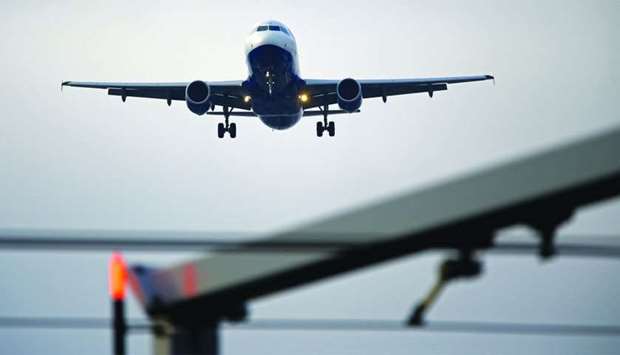
The world is swiftly moving towards an environment never experienced before by humans, with the temperature of the air and oceans breaking records, sea levels reaching historic highs and carbon dioxide surpassing a key milestone.
Air transportation’s impact on global warming is estimated at around 5% through carbon dioxide emissions and other substances, including nitrogen oxide and water vapour.
As the number of air passengers is expected to almost double to 7.8bn annually by 2036, aviation’s impact on the environment is bound to increase if nothing is done.
But a potentially game-changing global agreement that has taken effect on January 1 this year will enable aviation to mitigate greenhouse gas emissions and achieve carbon-neutral growth from 2020.
The Carbon Offsetting and Reduction Scheme for International Aviation or CORSIA is a historic agreement signed by the International Civil Aviation Organisation’s (ICAO’s) 191 member states.
It sets out a global system for capping net carbon emissions for the international aviation industry at 2020 levels by offsetting any additional emissions.
In other words, the agreement allows airlines to contribute towards the aviation industry’s goal of carbon neutral growth from 2020 onwards by financing greenhouse gas (GHG) emission reductions outside of the aviation sector.
The global scheme becomes mandatory beginning in 2027, but a voluntary pilot phase begins in 2021.
From January 1, 2019, any aircraft operators with annual carbon emissions greater than 10,000 metric tonnes (just over 11,000 US tonnes) will need to collect and report emissions data to establish a baseline measurement.
As of July 2018, some 73 nations have reportedly agreed to participate in the initial voluntary phase of CORSIA. They account for 76% of all international aviation activity.
It was ten years in the making, but on the New Year day, the implementation of CORSIA began, under which airlines have started monitoring and reporting their emissions for the first carbon offsetting obligations beginning in 2021.
A decade ago, the aviation industry became the first global business sector to set ambitious targets for carbon emissions.
First, to improve fuel efficiency per passengers by 1.5% annually up to 2020.
Second, to cap emissions through carbon-neutral growth from 2020, and third, to cut net CO2 emissions 50% by 2050 compared to 2005 level.
But to fully comply with CORSIA, most airlines covered by the international agreement will need to purchase emission reductions.
This is because air travel is expected to continue growing globally, and the corresponding increase in greenhouse gas emissions will likely outpace emission reductions achieved through efficiency and other means.
International aviation emissions are significant — if this sector were its own country, it would be among the top-ten emitters of carbon dioxide globally — and emissions are projected to continue growing as demand for air travel increases in future decades.
Sceptics say aviation is the mode of transport with the biggest climate impact by far — per 1,000 passenger-kilometres travelled, a flight generates on average 18 times as much carbon dioxide as a journey by rail.
Yet, air travel is growing faster than any other transport sector. The industry has successfully resisted emission reductions in absolute terms because any such limitation would impact on the industry’s profits, experts argue.
In response, ICAO member countries agreed to a goal of carbon neutral growth from 2020 onward. However, although there are current technologies that can improve operational and aircraft efficiency, increases in efficiency will not outpace the growth of the sector.
ICAO has agreed upon a CO2 standard for new aircraft models in early 2016. Alternative fuels also have the potential to reduce emissions from within the sector but are not yet commercially viable at sufficient scale.
It is therefore likely that the international aviation industry will fall short of meeting its post-2020 emission reduction commitments, with a projected gap of 7.8bn tonnes of carbon dioxide by 2040.
Industry experts say one of the most cost-effective ways for airlines to reduce their emissions is by conserving and restoring forests in developing countries.
The targets set by the aviation industry as part of CORSIA are ambitious, but realistic, provided governments work with industry.
Airlines will need to acquire billions of metric tonnes of emission reductions to meet their pledges and compliance obligations under CORSIA.
But, according to the International Air Transport Association (IATA), the global trade body of airlines, not every country was facilitating the implementation of the global agreement to tackle climate change effectively.
“It was very disappointing to see the European Union, which has done so much to promote CORSIA, undermine it by adopting their own Monitoring, Reporting, Verification (MRV) standards. European governments in Sweden, the Netherlands and elsewhere persist in adopting environmental taxes, which run counter to the commitments made at ICAO,” points out Alexandre De Juniac, IATA director-general and CEO.
“Of course, CORSIA alone is not enough,” De Juniac admitted at the CAPA Aeropolitical and Regulatory Affairs Summit in Doha recently.
“We are working with governments and across the industry to reduce emissions with new technology, increased deployment of sustainable aviation fuels, improved infrastructure, and more efficient operations. CORSIA will play a vital role in filling the gap until these efforts can reach maturity,” De Juniac said.
Undoubtedly, the aviation industry has made commitments and launched initiatives to become greener in future.
But will it be able to deliver on its promises? Is carbon-neutral growth a realistic goal? Let us keep our fingers crossed!
